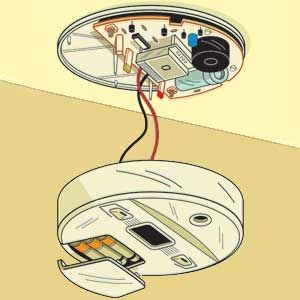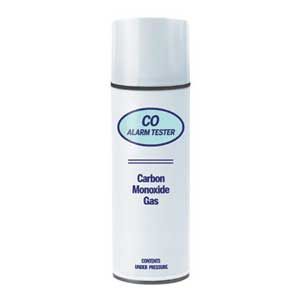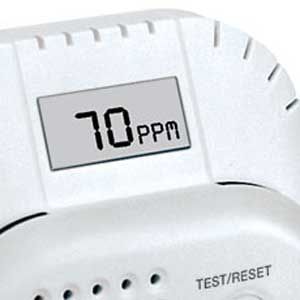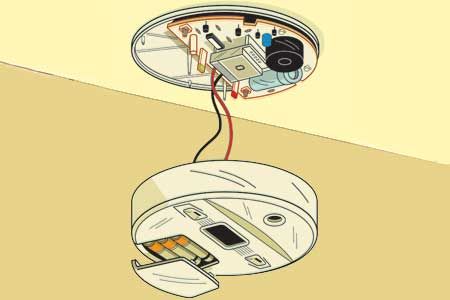
Despite what your mother told you, what you don’t know—or, for that matter, see or smell or taste—can hurt you. In the case of carbon monoxide, it can kill you. The invisible, odorless gas, a by-product of all fuel-burning appliances, heating devices, and engines, is responsible each year for more than 200 deaths (and possibly thousands more unreported, nonfatal poisonings) in the U.S. alone. Yet only one third of houses have CO alarms, and only a handful of states require them. Winter is the riskiest season for CO poisonings, so if you’re among the unprotected, now’s the time to act.
To understand how these alarms work, it helps to first understand the way carbon monoxide affects the body. When inhaled, CO combines with hemoglobin, the oxygen-carrying component in blood, to produce carboxyhemoglobin (COHb). Because COHb bonds with oxygen so tightly—200 times stronger than regular hemoglobin—cells slowly suffocate. Likewise, it’s difficult for the body to expel CO, so even small doses can build to toxic levels. The brain doesn’t recognize the danger because it regulates breathing rates based on carbon dioxide levels, not the body’s need for oxygen. Poisoning victims may complain of headache, fatigue, or nausea, but they never receive a clear warning from their bodies to walk away from a potentially deadly situation.
That’s where CO alarms come in. By constantly monitoring the air for the gas, which is almost always present in minute quantities, the detector calculates whether levels are high enough to pose a risk of CO buildup in the body. If so, the device triggers an alarm of 85 decibels or more, loud enough to jolt most anyone out of peaceful slumber. (Most deaths from CO poisoning occur while the person is sleeping.)
It’s easy for an alarm to sense CO. The trick is to make one that reliably tracks the minute fluctuations in levels over time and sounds a warning only when the cumulative exposure indicates a health risk. That requires a complex interaction between sensors and microcircuitry, which made such technology prohibitively expensive until 1993, when First Alert introduced the first battery-powered CO alarm for home use.
Today, prices range from $20 up to $100, depending on the type of sensing technology and the sophistication of the features. There are basic battery-powered or plug-in models, or fancier versions that talk, connect to a wireless network, or work in combination with a smoke alarm. But they all meet the same performance standard—UL 2034—set and enforced by Underwriters Laboratories, so you’re safeguarded no matter what kind you choose. Besides, installing one is no more difficult than mounting a smoke alarm. What are you waiting for?

CO Alarm
What is it?
An electronic device that alerts you when carbon monoxide exceeds safe levels.
Why you need it
CO is tasteless, odorless, invisible, and deadly. And it’s next to impossible for the human body to detect, even while being actively poisoned.
How it works
A sensor continually samples the air for CO molecules; a microprocessor collects the sensor’s data, analyzes it, and sounds the alarm if CO concentrations become dangerous: at least 70 parts per million, or ppm, over a 4-hour period.
Where to install it
In upstairs hallways, 5 feet off the floor and no more than 10?15 feet from bedroom doors; in rooms with boilers and furnaces.
Don’t install it
In bathrooms or other areas with high humidity, or within 5 feet of fuel-burning stoves and ovens.
What it costs
$20 to $100, depending on features.
The Truth About Test Kits
Playing on fears of malfunctioning CO alarms, some companies fill cans and capsules with CO and sell them to homeowners for do-it-yourself testing. These kits certainly will set off an alarm if the unit is functioning, but flooding a sensor with a dose many times higher than what it’s designed to sniff out won’t verify if an alarm will sound at the lower levels that are just as hazardous.
What’s more, the kits aren’t even necessary. CO alarms have a test button that simulates a CO spike and exercises the circuit right down to the alarm. Besides, an alarm’s circuitry is continually monitoring itself. If the sensor malfunctions or wears out, it should trigger a warning tone.

What to Look for
Keep these features in mind when shopping for a CO alarm.
NECESSITIES
UL or ETL label
Shows the device meets current safety standards (UL 2034). Don’t purchase any CO device that doesn’t have either of these labels molded into it.
Battery backup
When the power cuts off—and the kerosene heaters, gas-powered generators, and fireplaces are called into service—you’ll need a CO alarm that’s not dependent on a plug.
NICETIES
LCD display
Shows short-term peaks in CO levels—any reading above 30 ppm merits investigation—before it reaches alarm-tripping concentrations. Units that display the highest level of CO alert you to a problem that needs fixing. If a poisoning has occurred, they help emergency personnel determine what type of treatment to administer.
Voice warning
Programmed announcement in combo CO/smoke alarm unit tells you the location and type of danger the alarm is responding to.
Wireless networking
Links alarms together without hard-wiring so that when one alarm is triggered, all alarms respond.
Where to Find It:
Carbon monoxide alarms:
Kidde Safety
Mebane, NC
919-563-5911
(Story continues below ad.)
First Alert
BRK Brands Inc.
Aurora, Illinois
630-851-7330
Carbon monoxide alarm test kit:
National Safety Products Inc.
Finksburg, MD
877-412-3600

